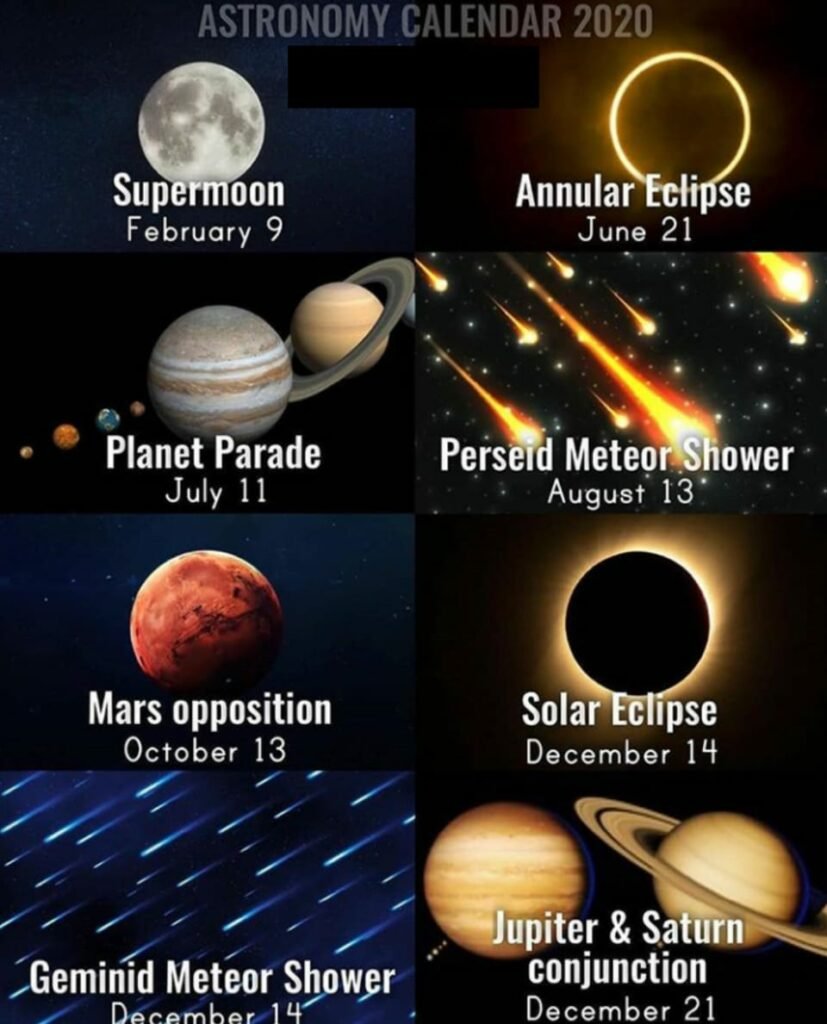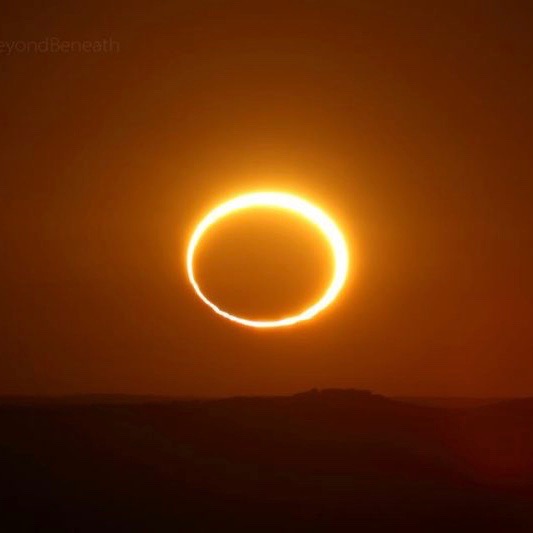2020 has started and brought many exciting events for astronomy lovers who long to gaze up at the skies and witness the celestial marvels. Here are some of the events coming up soon.

Supermoon

The phenomenon of supermoon occurs when the full moon is at the closest distance to the Earth in its orbit. Such a moon is unusually brighter and closer than on regular days. On February 9th, it will be present on the opposite side of our planet and will be fully lit. Many more supermoons are expected this year.
Annular Eclipse

On June 21, an Annular Eclipse is expected. This occurs when the Moon is too far away from the Earth to completely cover the Sun. This results in the appearance of a brightly lit ring around the darkened Moon. Its path will start in central Africa and will travel through Saudi Arabia, northern India, and southern China before ending in the Pacific Ocean.
Planet Parade

On July 11, skywatchers and stargazers will have a special treat as there will be a planet parade. Several planets like Venus, Jupiter, etc. will be in conjunction appearing to perform a parade in the skies, hence the name. It is a not to be missed event.
Perseids Meteor Shower

This is without a doubt, one of the best showers to observe as it lights up the skies beautifully. They are known for the bright meteors and are produced by the comet Swift-Tuttle. This shower runs annually from July 17 to August 24. This year, it will peak on the night of August 12 and the morning of August 13.
Mars Opposition

In 2020 besides sending a rover to Mars we will also have it a bit near to us. On October 13, Mars will be at the closest opposition to Earth and will be well lit. Astronomy lovers will have the opportunity to take beautiful snaps of the red planet. Telescopes can also be used to see the details on its surface.
Solar Eclipse

On December 14, a total solar eclipse is expected. This phenomenon occurs when the moon blocks out the Sun’s outer atmosphere. In 2019, a Total Solar Eclipse observed was in the narrow zones of the Pacific Ocean and South America on 2nd July, which was the only total Solar Eclipse of that year.
Geminid Meteor Shower

Geminids is the best of meteor showers and is able to produce approximately 120 multicolored meteors per hour when it is at its peak. he shower runs annually from December 7-17. It peaks this year on the night of the 13th and morning of the 14th. It can appear anywhere in the sky and to see it best, it is advised to choose a dark location.
Jupiter and Saturn Conjunction

On December 21, a rare conjunction of Jupiter and Saturn will take place. It very unusual to see these two celestial giants together. The last conjunction of such type occurred in the year 2000.
Also Read: The Last Cold Moon of The Decade


